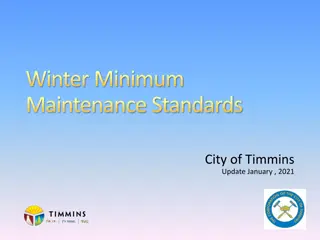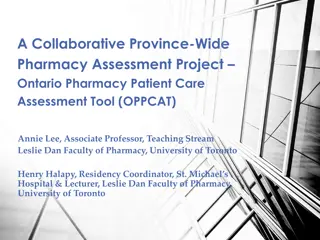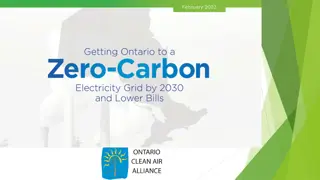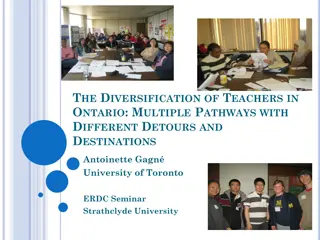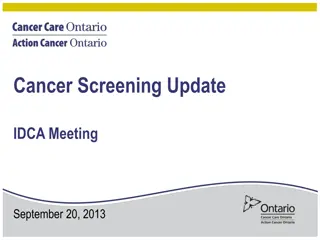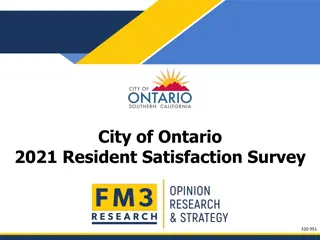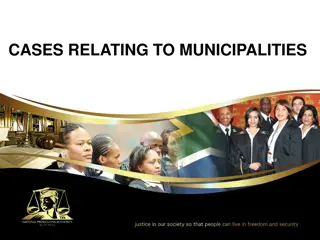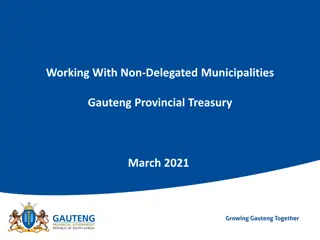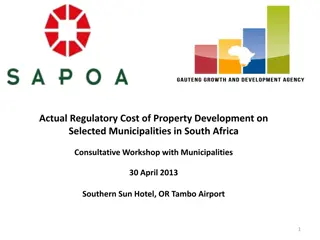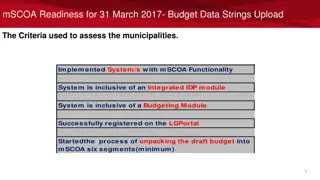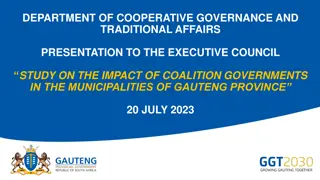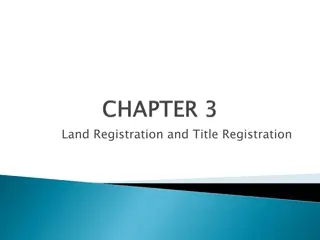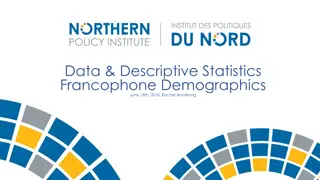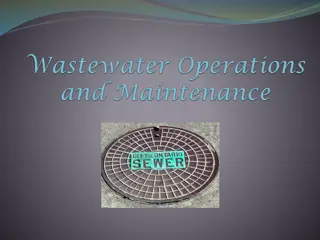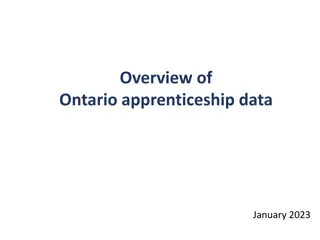Understanding Municipalities in Ontario
Municipalities in Ontario play a crucial role in delivering local services and managing community growth. They are granted powers and responsibilities by the provincial government, including areas like public transit, social services, and emergency services. Property taxes serve as a primary revenue source for municipalities, supporting the funding of essential services. Ontario municipalities are categorized into single-tier and two-tier systems, each with distinct structures. Understanding the types and functions of municipalities is key to comprehending their influence on communities.
Download Presentation

Please find below an Image/Link to download the presentation.
The content on the website is provided AS IS for your information and personal use only. It may not be sold, licensed, or shared on other websites without obtaining consent from the author. Download presentation by click this link. If you encounter any issues during the download, it is possible that the publisher has removed the file from their server.
E N D
Presentation Transcript
How do municipalities influence communities?
Municipalities in Ontario Ontario is separated into 444 different communities called municipalities. A municipality can be called a city, town, village, township, county or region. Each municipality is responsible delivering local services and managing the growth and well-being of their community.
Powers and Responsibilities Municipalities are given their powers and responsibilities by the provincial government. Examples include public transit, social services, garbage and recycling, parks and playgrounds, water and sewage, building permits and zoning, streets and sidewalks, libraries and emergency services (police, fire).
Key Features of Municipalities Municipalities share several main features: 1) A defined geographic area 2) The power to tax 3) An elected council
Property Taxes Property taxes are the main source of revenue (income) for municipalities. If you own property, you will pay a certain percentage of its value in taxes every year a portion goes to the municipality to help pay for local services and a portion goes toward the education system.
Types of Municipalities Municipalities in Ontario are either part of a single-tier or two-tier system. A single-tier municipality has one government and local council and it operates on its own. A two-tier system involve two layers of government and two councils. A lower-tier municipality has a local municipal council and government (similar to a single-tier municipality). An upper-tier municipality has a regional council and government, and provides services for two or more lower-tier municipalities.
Single-tier Municipalities There are 173 single-tier municipalities in Ontario. Some examples include:
Lower-tier and Upper-tier There are 241 lower-tier municipalities and 30 upper-tier municipalities. For example, the Region of Peel is an upper- tier municipality for three lower-tier municipalities.
Is our municipality a lower-tier or single- tier municipality? Are we part of an upper-tier municipality?
Local Councils Each local council (single-tier or upper-tier) is made up of a head of council, known as the mayor or reeve, and other council members, known as councillors or aldermen. Mayors and reeves are elected by all voters in the municipality. This is called a at-large system. Councillors and aldermen can be elected either at- large or by a ward system of voting (where the municipality is broken down into smaller sections).
Upper-Tier Councils In the case of upper-tier municipalities, there are two types of councils: county councils and regional councils. A county council is composed of designated elected members from the lower-tier municipalities. The county council selects the head of council, called a warden, from among its members. Members of a regional council are selected in different ways. They can be directly elected by voters, elected to sit on both councils, or appointed from within local councils. Mayors automatically become members of the regional council. The head of a regional council is called a regional chair. The chair is chosen by a vote of the members of regional council or they can be directly elected.
The Role of Council Council members govern their municipality through the following activities: Listening to the concerns and ideas of their constituents (people living in their community) Attending meetings Reviewing reports from municipal officials Creating, debating and voting on by-laws (rules) they believe will improve their municipality.
Final Thoughts What do you like most about your municipality and why? What would you change or improve about your municipality and why?


